On 4 June, reCAP 2024 took place live and remotely in St. Leon. Many sessions that focused on interesting news and uses of SAP CAP were recorded. Recap here what you missed.
Sarah Krämer (SAP SE) und Wolfgang Scheer (SAP SE): BTP Developers Guide – A guide to developing full stack BTP Apps with CAP
The BTP Developers Guide is an indispensable primer for developers aiming to leverage the capabilities of the SAP Business Technology Platform (SAP BTP) for full-stack application development. This guide emphasizes the adoption of the Cloud Application Programming (CAP) model for developing full-stack applications. Serving as a valuable resource, the guide provides easy reference for the development and deployment of business applications on SAP BTP. It encapsulates the collective expertise from successful projects, offering a concise compilation of recommended best practices and technologies for secure and efficient development.
Oliver Klemenz (SAP SE), Richard Lindner (SAP SE), Maximilian Grünfelder (SAP SE): Building scalable, responsive business applications with cap-js-community
You may already know @cap-js, but do you also know, that there is @cap-js-community. Join us in this session to learn about the projects within @cap-js-community and the architectural components, that allow you to build real-time, multi-tenant, scalable business applications. We will talk about stuff like event queues, worker backends, websockets and feature toggles. Learn how we develop technology components as part of our product development of SAP Advanced Financial Closing and make them available to the public. Furthermore we would like to invite you to contribute to @cap-js-community.
Maximilian Grünfelder (SAP SE): @cap-js-community/event-queue for Resilient and Scalable Event Processing
The Event-Queue is a CAP plugin built for CAP Node.js, designed specifically for efficient and streamlined asynchronous event processing. With a focus on load balancing, this package ensures optimal event distribution across all available application instances. By providing managed transactions similar to CAP handlers, the Event-Queue plugin simplifies event processing, enhancing the overall performance of your application. Additionally, Event-Queue provides support for periodic events, allowing for processing at defined intervals. This feature further extends its capabilities in load balancing and transaction management, ensuring that even regularly occurring tasks are handled efficiently and effectively without overloading any single instance. This makes it an ideal solution for applications needing consistent, reliable event processing. Learn in this session how to use this plugin in your project!
Markus Fath (SAP SE), Wenzel Svojanovsky (SAP SE): Developing a gen AI app using CAP and SAP HANA Cloud Vector Engine
In this presentation, we will introduce the core concepts of a gen AI application, including Large Language Model (LLM), Retrieval Augmented Generation (RAG), as well as text embeddings and semantic search. With this background, we will then explain recent enhancements of CAP for vector stores and semantic search, focusing on SAP HANA Cloud’s vector engine. Finally, a concrete sample application (“chat with your movies data”) is explained and demonstrated.
Jonathan Bregler (SAP SE), Shradda Shetty (SAP SE): Unleash your data: HANA Cloud performance tuning, hidden features, and more
In this session we will be looking deeper into the SAP HANA Cloud (HDI) features and functions. We have 3 sections planned: – Supportability and performance tuning with deployment parameters – How to use advanced calculation views, remote sources, and cross container access in CAP applications – hdbtable vs. hdbmigrationtable: when to use what in your CAP application (@cds.persistence.journal)
Vinay Shankaran (Henkel), Anshuman Satapathy (Henkel): Observability with Cloud Logging and Cloud ALM
Observability emerges as an essential remedy enabling the operations team to actively monitor and respond to situations, whether proactively or reactively. It’s crucial for all customers and partners to establish observability solutions atop their infrastructure and applications to ensure seamless operations. In this session, we will delve into the simplicity of streaming OpenTelemetry data (metrics/logs) to both cloud ALM and cloud logging for a CAP application deployed on Cloud Foundry.
Stefan Henke (SAP SE): Observing CAP Applications with OpenTelemetry
Open Telemetry is an emerging standard in the area of observability. In this session, we will introduce the capabilities of how CAP (Java and Node.js) integrates with Open Telemetry for distributed traces and metrics and how these signals can be forwarded to Dynatrace and Cloud Logging Service.
Thorsten Sandfuchs (SAP SE): Elevate Your Cloud-Native CAP Applications to Peak Performance
Congratulations on seamlessly following the BTP Developer Guide and deploying great apps! Now, let’s take it a step further – ever wondered how to not just ensure it works, but truly optimize your service? Are your applications making the impact you desire? Every request is successfully served? Join us as we unveil the secrets of SAP BTP’s CAP-enabled Observability operational pattern. We will help you to understand, analyze, and run healthy and productive CAP cloud applications.
Andre Meyering (SAP SE), Hans-Joachim Both (SAP SE): New CDS Modelling Features
This sessions shows advancements in CDS modelling that became available in the last year, such as “Expressions as Annotation Values”.
Sebastian Van Syckel (SAP SE): Native OData Adapter of CAP Node.js
CAP Node.js is getting it’s own OData adapter. In this session, we will look at the design principles and overall architecture, before diving into some individual components. Afterwards, we will take a practical look at the workflow of a request — incl. custom extension points from the time the request enters the server until its response leaves it. Further, we will showcase the benefits of the CAP-native implementation in a performance analysis. Finally, we will give an outlook on how to build own protocol adapters.
Thomas Bonk (SAP SE), David Kunz (SAP SE), Dietrich Mostowoj (SAP SE): Generic / Transactional Outbox in CAP
Introducing the Transactional Outbox pattern – Description of the design of the CAP Transactional Outbox, including differences in the CAP Java and CAP Node.js stacks – Demo (CAP Java and CAP Node.js)
Alper Dedeoglu (SAP SE): CQRS Pattern implementation with CAP
In this session, we will explore the synergies of combining CAP (SAP Cloud Application Programming Model) with AWS DynamoDB and SAP HANA Cloud to implement the CQRS (Command Query Responsibility Segregation) pattern. Learn how CAP, a comprehensive development paradigm from SAP, seamlessly integrates with AWS DynamoDB for efficient command and query handling, while leveraging the power of SAP HANA Cloud for robust data management.
Mauricio Lauffer (SAP SE): CAP Nodejs Best Practices – focusing on the Ops part of DevOps
CAP documentation has a great best practices section for Node.js apps. However, it focuses on the development aspect of it, not much on the operations. The session will cover best practices for running CAP Node.js applications in SAP BTP. How should you configure your application’s package.json? What else you should add to your .mta file? What issues you may face if these best practices are not implemented? What benefits will it bring? The examples will target deployments to Cloud Foundry, but they apply to both Cloud Foundry and Kyma/Kubernetes environments.






